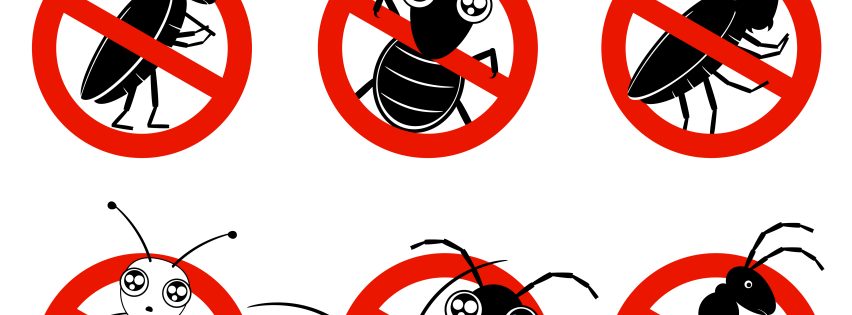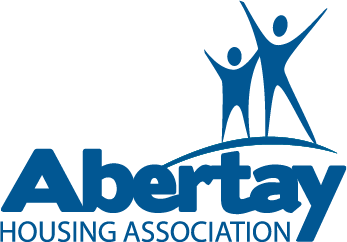Pest Control

Guide to dealing with insects, pests and vermin
The Association receives many calls from tenants requesting help and advice on dealing with many annoying insects and pests. Although the Association is responsible for ensuring that properties are fit for human habitation at the start and throughout the tenancy, some responsibility also lies with the tenant to ensure that they are doing everything they can to prevent infestations.
Pests can spread diseases, damage tenants’ homes and belongings, sting or bite, aggravate asthma, eczema and other allergies and cause intolerable interference with a person’s use or enjoyment of a property. Pests and infestations may also constitute a statutory nuisance, as set out in section 79 of the Environmental Protection Act 1990 or the Public Health etc.(Scotland) Act 2008.
The Association’s responsibilities
The Association:
- is only liable for ensuring that all properties, including gardens, are pest free before a tenant moves in. Wasp / bee hives and treatment of fleas etc. becomes the tenant’s responsibility as soon as the property is occupied.
- is only responsible for carrying out repairs and treating the infestation (regardless of the pest) if it is apparent that an infestation is caused by disrepair or lack of action on our part.
- will intervene on the most serious vermin infestations promptly (i.e. rats and cockroaches) as they can spread disease and are a risk to public health. Additionally, the Association may also intervene if there is an infestation of bed bugs, as if they are not treated promptly, they can spread into the fabric of the whole building and can become very difficult and expensive to eradicate.
- is not responsible for dealing with an infestation caused by the tenant’s own negligence (i.e. if food has been left out or rubbish has not been disposed of correctly). In these cases the tenant will be held liable for the cost of treating such infestations and will be recharged any costs incurred by the Association.
- will not be held responsible for any damage caused by pests to tenants’ belongings.
- will make all tenants aware of their responsibilities at the start of their tenancy through the Tenancy Agreement, information packs and leaflets.
- The Association will impose preventative measures to reduce the likelihood of harm arising from pests, to include housekeeping checks of our Estates to ensure the risk of pests and infestations is minimised.
Tenants’ responsibilities:
- Tenants are responsible for the treatment of minor infestations within their property.
- Tenants must notify the Association if communal areas are infested with vermin / pests.
- Tenants can still inform the Association if there is an infestation within their property, so that we can assess the cause and provide advice on the next course of action.
Advice to follow when dealing with nuisances
- Ants – Ants and other insects, although not classified by Environmental Health Officers as a ‘Public Health’ threat, are a nuisance and can be difficult to get rid of. They will return, usually to the kitchen time and time again. However, the Association would usually advise the tenant about stricter cleaning regimes and advise them to purchase treatments available from supermarkets or hardware shops.
Garden ants usually nest outdoors in grass, under slabs and in flowerbeds. Although they live outdoors they can and do find their way indoors through gaps in brickwork, at windows and doors etc. in search of foods. Removing any spillages of foodstuffs and by making sure that sweet foods in particular are stored securely in containers will discourage ants from entering your home.
You can treat areas affected by ants and other crawling insects, however you have to be thorough in your methods. Apply a residual insecticide for crawling insects, available from DIY stores and garden centres, to the entrance to the nest if you know where it is, or at the areas where you find ants entering your home.
- Vermin – if this problem was not apparent on the day of sign up, the cost of removal measures are at tenants cost. Again ensuring that no food debris if left lying around will discourage them.
- Wasps – if a nest appears in the middle of a tenancy, removal is at the tenant’s cost. Wasp hives and treatment of fleas etc. becomes the tenant’s responsibility as soon as the property becomes occupied.
Dundee City Council will deal with wasp problems, but this will be charged to the tenant. If you discover wasp nests you should not disturb the nest in any way, as you may provoke an attacking swarm. However, some insecticide placed at, or near, the entrance to the nest will kill off the insects inside usually within a 24-hour period. Extreme care should be taken if you decide to take such a course of action. Most wasps’ nests are located in isolated areas of buildings such as in the eaves of a roof and the best advice would be to leave these nests alone if the insects are not causing any harm, or creating a serious nuisance.
- Bees – Bees are a protected species and swarms should only be removed by a professional bee-keeper. It is the responsibility of the tenant to pay for removal of a bee hives.
- Bats – Any nesting of bats will have to be ignored as they are a protected species, and it is illegal to kill, injure and capture a bat or deliberately damage its roost. Generally they will not cause too much damage, but their droppings are a problem and in such cases tenants should contact Scottish Natural Heritage.
- Squirrels – these are a real nuisance and are known to chew through just about anything, including electrical wiring. However, it is illegal to trap and kill squirrels during their breeding season which is also usually the time when they want to inhabit a property. Tenants are advised to contact a local pest control company so they can advise the best way to proceed.
- Birds – Birds are protected by the Wildlife and Countryside Act 1981. While the Act does allow for the destruction of birds under certain circumstances, this action is only permissible where it can be demonstrated that the birds pose a risk to public safety or public health, and only when all other non-lethal methods of control have been investigated and discounted. Again, the Association will only become involved if it can be proved that the birds have gained access into areas such as loft spaces through a defect in the building fabric or the roof.




